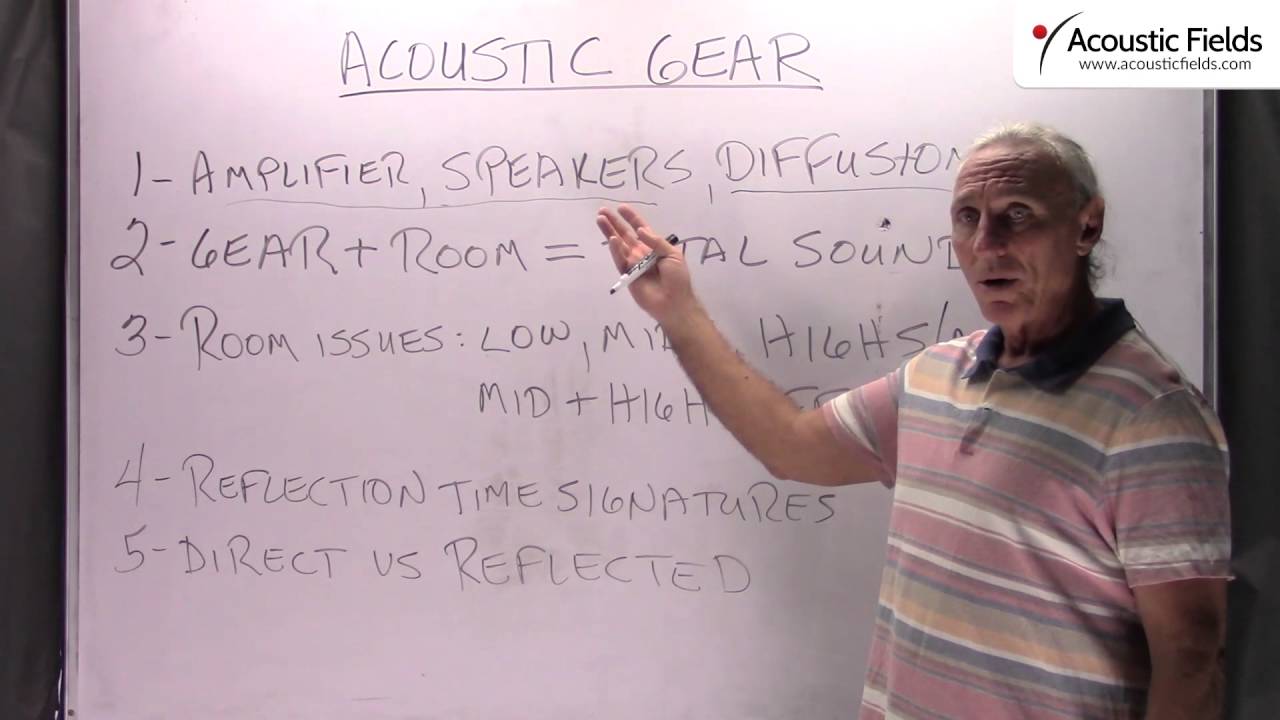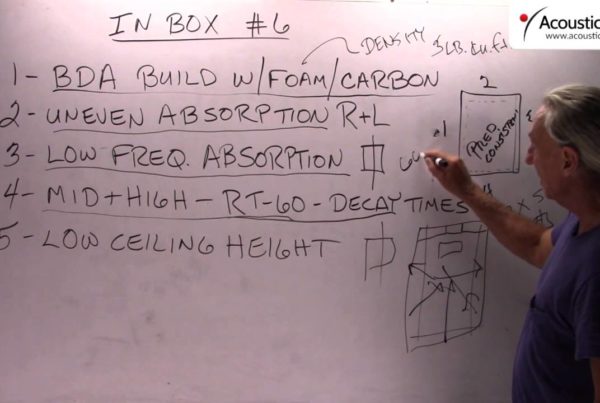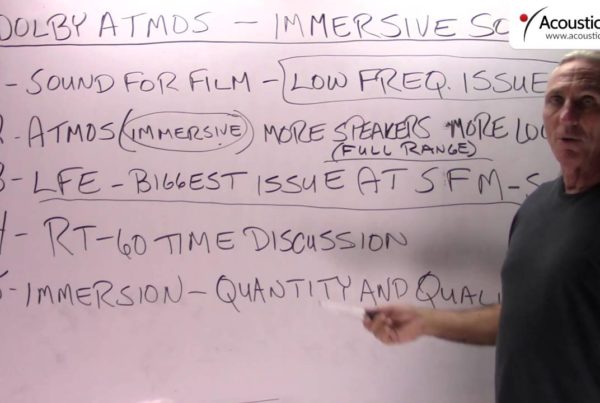Today we’re going to talk about acoustic gear and we’re going to talk about how important room treatment is. And we have amplifiers, we have speakers but we have to start getting in our mind that the room treatment is just as important as the amplifiers and speakers.
I know that’s going to be difficult for a lot of you out there to accept but it’s so important and it’s so much a part of the total sound that you hear in your room that I can tell you a day doesn’t go by I get 2 or 3 phone calls where someone tells me well, I bought this set of speakers, I bought this amplifier, I bought this monitor, I bought this console, I bought this, that or the other. And then when I ask them what size of room they’re putting it in I say to myself these poor people are not going to be able to hear half of what the engineers designed the speaker and amplifier and console to sound like.
So it’s like I always say the room doesn’t care about your gear, it cares about the size of it. Size is the big issue with rooms but it doesn’t care who the manufacture is. So you have to start elevating your thinking and I know you’re going to say, well, you’re an acoustic products manufacturer, it’s easier for you to say. Well, it’s not.
And it’s so important because you cannot have one without the other. You can’t have a high quality amplifier connected to a high quality speaker in a bad room. Then you negate both of these right away and you negate the relationship between them and you negate why you bought them. So you have to have just using diffusion treatment up here, we could put absorption also. But the bottom line here is we need to elevate the room treatment products and technologies up to the gear platform. Take it as seriously as you do your amplifier and speaker selection. Put as much time and effort into your amplifier and speaker selection as you do your other stuff. Well, put as much time into the room treatment as you do your amplifiers and speakers, I’m sorry.
So what do we have for room issues? The standard issues all the time, low, mid and high absorption. We have to manage that first and then we can go and start addressing the middle and high frequency diffusion. So we can do a lot of different things here but I want you to see that it just fits into two categories. Low, mids and highs for absorption and middle and high for diffusion. We don’t diffuse low frequencies. I suppose we could but the space and the treatment requirements would be like having an Atlas rocket booster in your living room in terms of size so you wouldn’t want anything like that.
So two technologies, absorption and diffusion. We don’t have any more than the two. I wish we did sometimes but then there’s hybrids between the two but we don’t have that. So what do we have? Well, we have reflections because we have all these surfaces of the room bouncing energy around. And then we have to get those reflections to balance out that direct energy that comes straight at us from the speakers. So it’s this marriage of direct versus reflected energy that we’re always trying to create and we do that through rates and levels of absorption, rates and levels of diffusion and proper management.
But the purpose of this video is to try to elevate your thinking. When you’re thinking about amplifiers and speakers, you’re allocating a certain amount of your budget for those; you must allocate a certain amount for absorption and diffusion technologies within your room.







